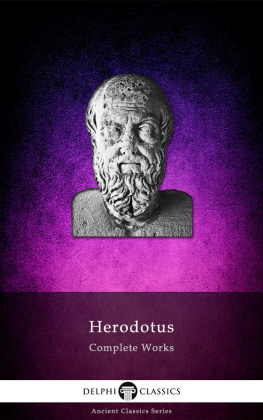This edition first published 2011
2011 Sinead Keeney, Felicity Hasson and Hugh McKenna
Blackwell Publishing was acquired by John Wiley & Sons in February 2007.
Blackwell's publishing programme has been merged with Wiley's global Scientific, Technical, and Medical business to form Wiley-Blackwell.
Registered office
John Wiley & Sons Ltd, The Atrium, Southern Gate, Chichester, West Sussex, PO19 8SQ, United Kingdom
Editorial offices
9600 Garsington Road, Oxford, OX4 2DQ, United Kingdom
The Atrium, Southern Gate, Chichester, West Sussex, PO19 8SQ, UK
2121 State Avenue, Ames, Iowa 50014-8300, USA
For details of our global editorial offices, for customer services and for information about how to apply for permission to reuse the copyright material in this book please see our website at www.wiley.com/wiley-blackwell .
The right of the author to be identified as the author of this work has been asserted in accordance with the UK Copyright, Designs and Patents Act 1988.
All rights reserved. No part of this publication may be reproduced, stored in a retrieval system, or transmitted, in any form or by any means, electronic, mechanical, photocopying, recording or otherwise, except as permitted by the UK Copyright, Designs and Patents Act 1988, without the prior permission of the publisher.
Wiley also publishes its books in a variety of electronic formats. Some content that appears in print may not be available in electronic books.
Designations used by companies to distinguish their products are often claimed as trademarks. All brand names and product names used in this book are trade names, service marks, trademarks or registered trademarks of their respective owners. The publisher is not associated with any product or vendor mentioned in this book. This publication is designed to provide accurate and authoritative information in regard to the subject matter covered. It is sold on the understanding that the publisher is not engaged in rendering professional services. If professional advice or other expert assistance is required, the services of a competent professional should be sought.
Library of Congress Cataloging-in-Publication Data
Keeney, Sinead.
The Delphi technique in nursing and health research/Sinead Keeney, Felicity Hasson, Hugh McKenna.
p. ; cm.
Includes bibliographical references and index.
ISBN 978-1-4051-8754-1 (pbk. : alk. paper) 1. NursingResearchMethodology. 2. HealthResearchMethodology. 3. Delphi method. I. Hasson, Felicity. II. McKenna, Hugh P., 1954- III. Title.
[DNLM: 1. Nursing Researchmethods. 2. Delphi Technique. 3. Health Services Researchmethods. 4. Research Design. WY 20.5]
RT81.5.K47 2011
610.73072dc22
2010040520
A catalogue record for this book is available from the British Library.
Preface
The Delphi Technique in Nursing and Health Research is written as a guide for any students and/or researchers who wish to use this methodological approach. The aim of the book is to introduce the researcher to the Delphi, outline its historical development and serve as a manual to facilitate the use of the technique. Issues that a Delphi researcher must consider will be presented in a straightforward fashion by discussing in detail applications to research. The reader is taken on a step-by-step journey from the research question to choosing a sample through conducting and analysing data. For example, methodology and issues related to design typologies, sampling, instrumentation, methodological rigour and methods of data analysis are discussed. Parameters for the successful application of the Delphi and its variety of uses are analysed, using examples of real empirical investigations.
The techniques key characteristics, anonymity, use of experts and controlled feedback are examined. Furthermore, the specific role of the Delphi researcher will be explored in depth. The book provides the reader with the necessary information to participate in and conduct studies using the Delphi methodology. Brief case scenarios are presented for readers consideration. In addition, key learning points are detailed at the end of each chapter along with an extensive and current annotated bibliography.
Acknowledgements
This book is a collective creation and, as authors, we recognise the benefit from the support and labour of others.
Hugh acknowledges his wife, Tricia, his son, Gowain, and his daughter, Saoirse, whose patience and support know no bounds.
Felicity thanks her family for the support and encouragement they provided in the writing and production of this text.
Sinead thanks her husband, Declan, and her children, Niamh and Niall, for their unwavering support, belief and encouragement.
1 The Delphi Technique
Introduction
Most research studies are driven by research questions that need answering. To do so, the researcher must employ a research design. While there is little agreement among researchers as to the proper classification, Parahoo (2006) suggested that there are three types of research designs: experimental, case study and survey designs.
Experimental designs tend to be future oriented and the researcher often has to set up the conditions under which the investigation will take place. The most scientific version of the experiment involving human subjects is the double-blind randomised clinical trial. It is employed widely in medicine in the testing of new drugs and is often referred to as the gold standard of research designs.
Case studies are in-depth investigations of phenomena. This type of design helps researchers gain an intimate knowledge of a person's or a group's condition, thoughts, feelings, actions both past and present, intentions and environment (Creswell, 2003).
Survey designs are by far the most common type used in health care research. This may be classified as descriptive, exploratory or comparative. The aim of a survey is to gather data from specific individuals, groups or populations for the purpose of addressing a particular issue. A more detailed overview of survey designs can be found in McKenna et al. (2006).
One type of survey that is gaining in recognition and popularity is the Delphi Technique and that is the focus of this book. This chapter will define and describe the technique, provide background as to its origins and outline the different types of Delphi surveys available to researchers. The characteristics of the Delphi will be outlined and there will be discussions on who can be categorised as experts, what constitutes a round, how feedback is handled and what is meant by anonymity and consensus. Finally, the Delphi will be compared with other consensus reaching methodologies including the nominal group technique and the consensus conference.
History of the technique
The desire for humankind to predict their future is an ongoing quest. Dating back thousands of years, oracles had a firm place in the life of Greeks and Romans. One of the most important oracles in the classical Greek world was at Delphi. The Greek word Delphois refers to the womb indicating the Grandmother earth (Fontenrose, 1978). The name Delphi is derived from the Oracle of Delphi. Delphi is an archaeological site in Greece on the south-western face of Mount Parnassus. In Greek mythology, Delphi was the location of the most important oracle in the classical Greek world, and a major site for the worship of the god Apollo. The god Apollo made himself master of Delphi, after slaying the dragon Pathos who protected the site, was also famous for his ability to foresee the future (Linstone, 1978). Legend has it that Apollo prophesies were transmitted through female intermediaries, known as Pythia , a name derived from the python, a source of wisdom in ancient Greece (von der Gracht, 2008). She had to be an older woman of blameless life chosen from among the peasants of the area.










